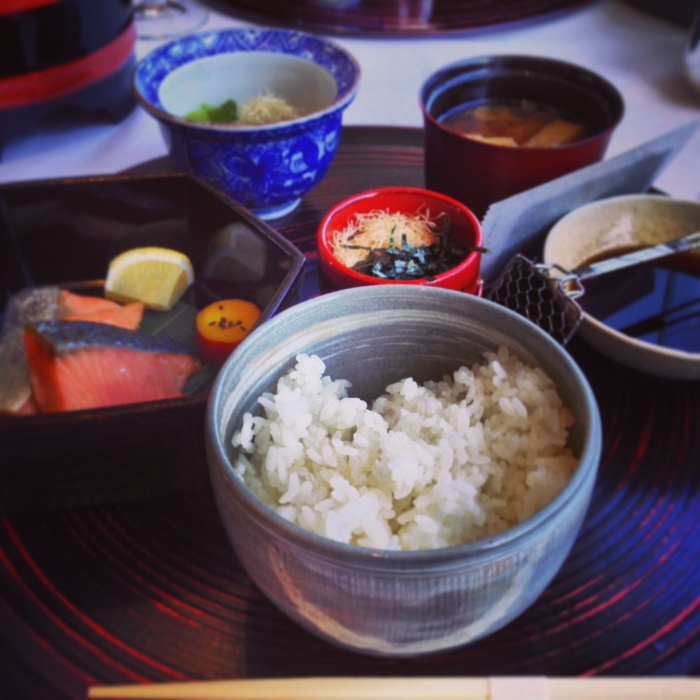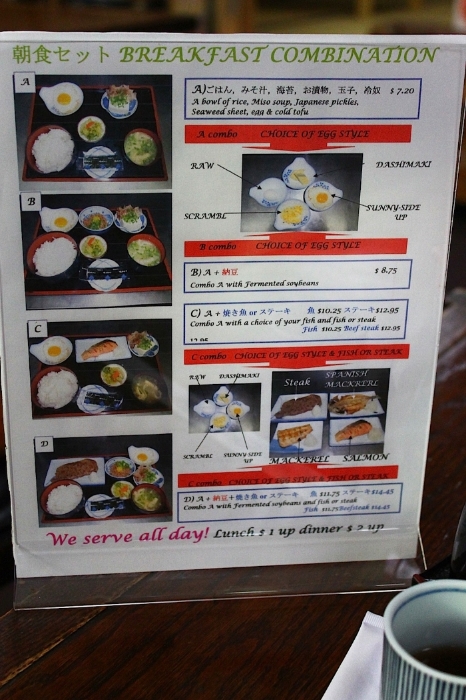Fukagawa
When my husband and I traveled to Tokyo for the first time in November, we feasted on a vast array of Japanese delights, from soba to sushi, yakitori to Yamazaki (read all about the trip in great detail here). One delight perhaps unrivaled on the trip was to be found at breakfast time, in the lovely dining room of our hotel. We stayed at the Park Hyatt, where the film “Lost in Translation” was shot, a luxury we certainly couldn’t have afforded but for the fact that we have a lot of flexible travel points. The hotel was the epitome of refinement, and the staff, like everyone we met in Japan, was beyond polite. Once at breakfast someone on the wait staff noticed I had opened a packet of Vitamin C powder and was pouring it into my water glass. I opened my mouth to say to my husband, “I need a—" when the man appeared at my side with a small spoon on a napkin. It was unreal. Breakfast was included in our room rate at the Park Hyatt, and they had a lovely buffet as you may imagine, as well as a variety of menu items available, but the real treat was the Japanese Breakfast. A dazzling array of different delicacies—smoked salmon filets with a wedge of lemon and a tiny bite of sweet potato in a perfect cylinder; miso soup; steamed Japanese vegetables with sesame sauce; tamago; tiny fish (eels?) with salt and lemon; burdock and carrot salad; steamed rice, and my favorite part, two varieties of fresh tofu and boiled spinach, meant to be spooned out of their broth with a small grate provided to each diner and dipped in a ponzu/soy sauce soup. The tofu was heavenly, the consistency soft and delicate. Every item was preciously plated, light and delicious. This breakfast was a meal that made you feel…spoiled.
I have always thought that Japanese breakfast as we know it was perhaps a hotel invention, or at least something rarely found outside of hotel dining rooms. I know I have seen it offered at many hotels in Hawaii, and now in Japan, but had yet to find it on a restaurant menu in LA or elsewhere. You may imagine my delight at discovering Fukugawa in Gardena. Tucked into a back corner of a large strip mall, Fukugawa is a large but cozy feeling restaurant, the décor featuring paper lantern light fixtures and sliding wood paneled doors, a tatami room, and some sort of Japanese history diorama behind glass. For lunch and dinner Fukagawa is a very decent soba/udon/tempura/shabu shabu spot, but every morning from 7-11 it offers what I have so long sought out—a refined, light, and delicious Japanese breakfast. And for quite a bit less than the Park Hyatt.
I can’t resist a meal that consists of many different little dishes—variety excites me. The Japanese breakfast combinations at Fukagawa, with their endless options and variations (see dizzying chart below), provide that special experience of tasting and choosing bites. I love to opt for combination C for $10.95: grilled mackerel or salmon, marinated tofu with scallion and bonito flakes, Japanese pickles, steamed rice, seaweed, egg (4 choices for how you like your egg, I highly recommend Dashimaki, the sweet omelet I know as Tamago at sushi restaurants,) and miso soup. The miso soup is a variation on the norm, with that spongy, almost tripe-textured inari type tofu and a lot of onion cooked down in the broth. The mackerel is moist, salty, and flaky, the salmon is meaty and moist with crispy skin. There are meatless combinations for less $ on offer as well (though not vegetarian, dashi and bonito are fish products), or you can select Spanish mackerel or steak with your combo C. I’m not generally a one-meal-a-day type of person, but if you arrive at 10:50 and have this breakfast for brunch, it will really fill you up without feeling heavy.
I know I have perhaps favored Japanese cuisine in my selections for this blog; I could say that’s because we have an embarrassment of riches in LA when it comes to Japanese food, with Little Osaka on Sawtelle in West LA, Little Tokyo downtown and Torrance/Gardena in the South Bay all offering dozens of authentic, specialized restaurants. More truthfully, it is most likely because I find that Japanese food is probably the best cuisine on Earth. I think the sheer variety, the fact that you could probably eat 50 completely different bowls of ramen in LA alone, is incredible. In Tokyo we had dinner at a Michelin starred soba restaurant, and I had a kind of soba I’ve never seen before, the buckwheat noodles flat and wide like Tagliatelle. There is no doubt that I will be posting many more Japanese recommendations this year and in the years to come, but to start off 2014, I am happy to pay homage to my highlight of last year, the delightful five days we spent in Tokyo, by sharing Fukagawa. I hope you enjoy an opportunity to indulge in that elusive treat, the Japanese breakfast.







